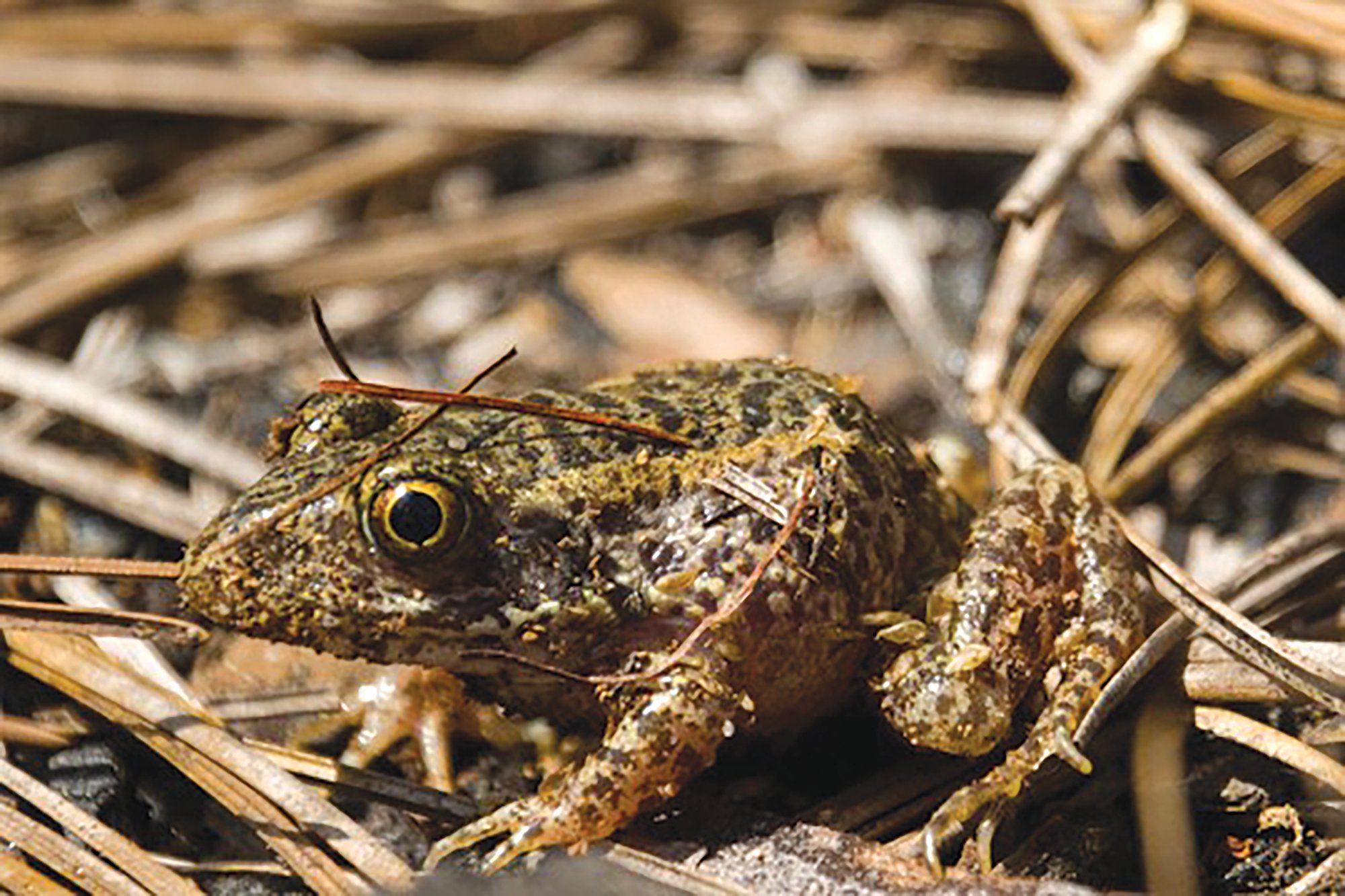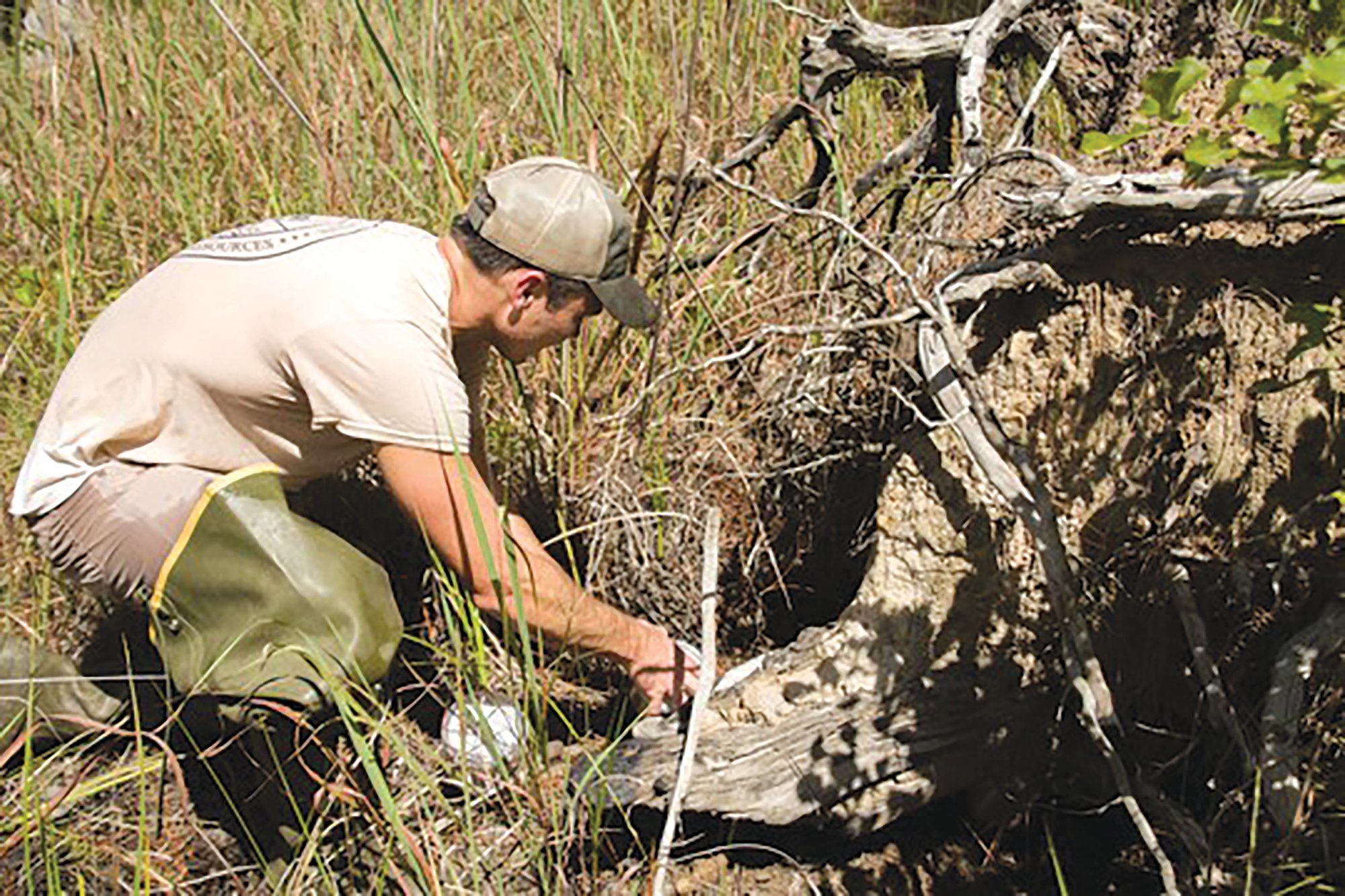SCDNR, Riverbanks give gopher frogs 'head start' in Lowcountry
COLUMBIA - The S.C. Department of Natural Resources and Riverbanks Zoo are collaborating on a "Head Start" program to raise and release the state-endangered gopher frog on lands in the South Carolina Lowcountry, and that partnership resulted in the recent release of hundreds of frogs on public land in the Palmetto State.
"Gopher frogs are excellent indicators of ecological health in the longleaf pine ecosystem," said SCDNR herpetologist Andrew Grosse. "They have a very complex life history and highly specialized habitat requirements. All of the pieces must be in place and functioning at a high level to support these fragile populations."
The collaboration between SCDNR and Riverbanks Zoo is part of a multi-state project for restoring wetlands and boosting gopher frog populations in South Carolina, North Carolina, Alabama and Georgia.
"We are very excited to once again team up with our partners at SCDNR for our latest venture: head-starting the state-endangered gopher frog," said Sean Foley, Riverbanks Zoo curator of herpetology. "We've been hoping to get to this point for years. To actually see it come to fruition is truly rewarding."
Sharp population declines earned the frogs a state-endangered-species listing in South Carolina. Additionally, the U.S. Fish and Wildlife Service will assess the range-wide status of gopher frogs in the coming years to determine whether they should be listed under the federal Endangered Species Act. The multi-state project is a diligent effort to reverse population declines before the frogs need federal protection.
Grosse said the partnership between SCDNR and Riverbanks Zoo is a natural one: The zoo is good at raising animals in captivity, and SCDNR is good at finding them.
"It's a matter of how we can best use our strengths for species conservation," he said.
The "Head Start" part of the project results when a portion of a gopher frog egg mass is collected from a breeding wetland and transported back to Riverbanks Zoo. Once at the zoo, they are cared for by zoo staff for several months, until they "transform" into frogs. Those frogs are then released to the wild to grow and, hopefully, reproduce. Because the survival rate of eggs and tadpoles is extremely low, keeping them in captivity until they bypass this vulnerable life stage gives them an extra "head start" toward survival. Grosse said that populations of gopher frogs in South Carolina have declined to a point that just doing habitat restoration is not enough.
"We needed to take action to give these populations a better chance at survival," Grosse said, "and that means getting more frogs out onto the landscape."
The U.S. Fish and Wildlife Service has two "Head-Start" facilities that have raised and released several hundred frogs during the last few years to help boost two additional gopher frog populations in South Carolina.
While the habitat restoration part of the project is the key to ensuring that gopher frogs can persist into the future in South Carolina, the hope is that all of these collaborators working together will now give this species the support it needs to become a permanent fixture in the South Carolina Lowcountry for years to come.
More Articles to Read




